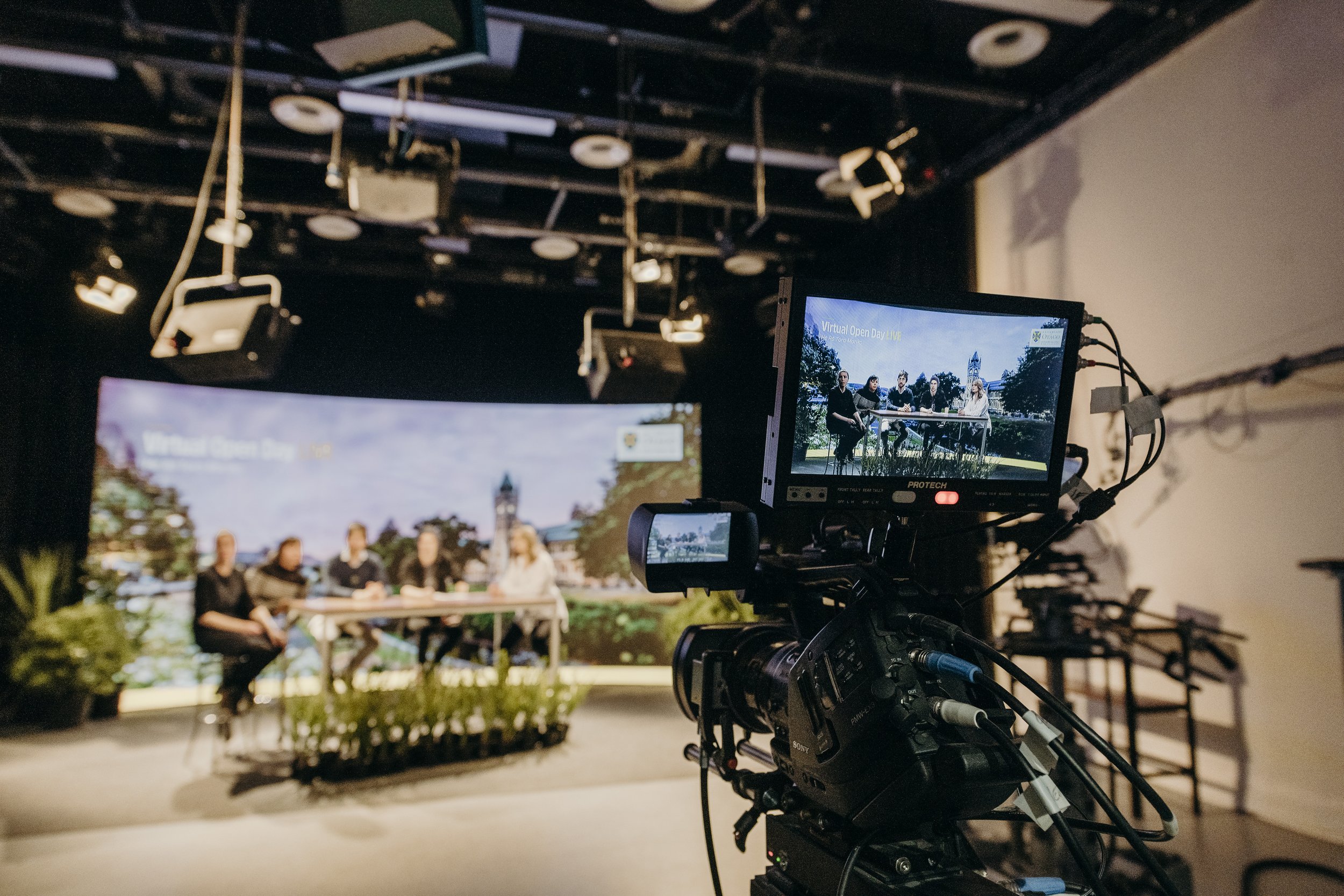Gravity’s Top Tips for Livestreaming
In the internet age we’re all familiar with Live Streaming, but it can still feel like a lot of pressure when it’s your first time organising an “on air” situation. There’s a lot of moving parts when it comes to capturing video, and when your audience is watching in real time there’s no room for error.
So whether you’re getting married, running a corporate presentation, or you’ve got a special moment to share, Gravity has put together our top tips for producing a live stream that will impress the viewers at home and keep them glued to their screens.
Setting the Scene
Setting is key to any broadcast. Consider what you want your audience to take away from the event, and how you want to be perceived. Speaking from a lectern in a dark room sets a very different vibe to a big comfy couch in a wide open space.
Before the event you should choose whether you’d like to be seated or standing. You also need to consider what you’ll be looking at. If you’re hosting an interview then you’ll probably be talking to the interviewee. If you’re giving a presentation then you’ll probably want a big screen behind the camera, so you can see your slides and notes. Not to worry - Gravity can make it work!
When it comes to finding a backdrop, it can be hard to imagine what will look best on camera. For events like weddings and funerals the setting will be obvious. At the other end of the spectrum a black-draped studio contributes an air of professionalism. For a branded corporate production you’ll want to get your brand in the shot, perhaps on a strategically placed banner or sign. If you’re really keen to dazzle your audience, you can opt for an LED screen backdrop, with static or moving graphics that will create a television-quality production.
Light It Up
And no television set is complete without lighting. Often in a well lit scene you wont even notice that there’s any extra lighting at all, but when it’s time for that close up we’re all grateful for some flattering front light.
Decorative lighting against a backdrop or set piece can also create a sense of depth in the shot and add some colour too - a great way to reinforce your branding.
Sound good?
It can be easy to focus on the visuals when planning a livestream, but quality sound can make or break a broadcast. Videos with poor sound are more likely to bother viewers, to the point where they may turn off if they either can’t understand what’s being said or it’s uncomfortable to listen.
Consider how many people are going to be speaking, and what sort of audio you'll need to catch. Is it conversational or direct? Will they be in a fixed position or moving around the room? A lectern mic would be appropriate for a more formal presentation, while a Q&A session might work better with individual lapel mics. Sometimes handheld mics are used, as a sort of talking stick, to ensure only one person can talk at a time.
You’ll also want to consider whether you need to hear any audio in the room. Will you have anyone joining you remotely, or perhaps there’s a video you want to play in your presentation that presenters will need to hear? At a wedding or a funeral there will be music played, which both the guests in-person and those watching at home will want to enjoy.
Thinking about these components well in advance will ensure that everything sounds great on the day. Most importantly, don’t underestimate the importance of a positive auditory experience for your listeners.
How many cameras?
Videography can be as simple or dynamic as you wish for a livestream. You might just want to look down the barrel of a single camera, and it’s often helpful to have another angle to supplement the broadcast and hold the interest of the audience. A roving camera, where an operator can follow a number of speakers, adds both flexibility and detail.
The viewing experience
The other important thing to consider is where your audience will see your live stream. For a personal event you might choose Facebook Live in a private group, or for a corporate presentation we’d recommend embedding the video into a branded webpage. If viewers need to interact then you’ll need a mechanism for asking questions or reacting.
For presentations you’ll also want to consider your slides. How do you want to appear alongside these? A real pro-tip from our livestreaming experts would be to leave the bottom right corner of the screen free, so that our stream producer can overlay your close-up using Picture-in-Picture.
Most importantly you want to hold their attention - so pay attention to the points above when planning your own live stream. To find out more about how Gravity can help you keep your audiences glued to their screens, get in touch.





